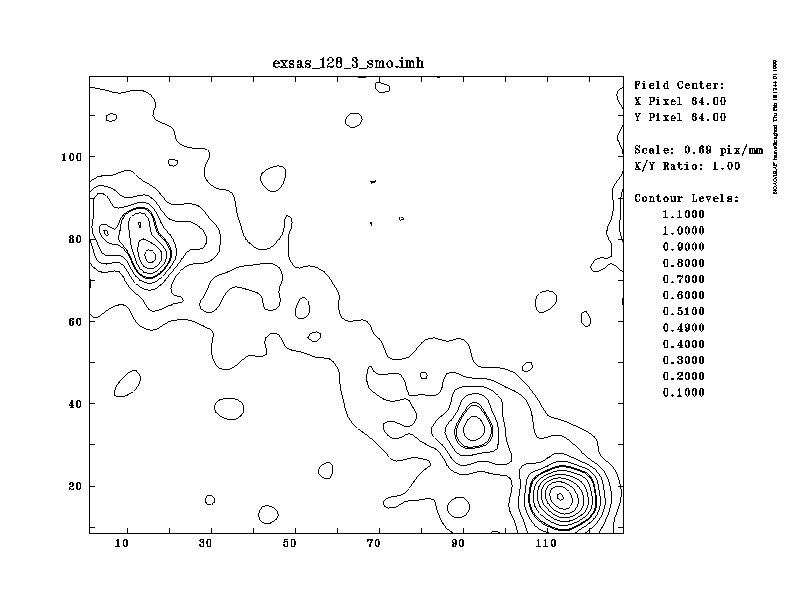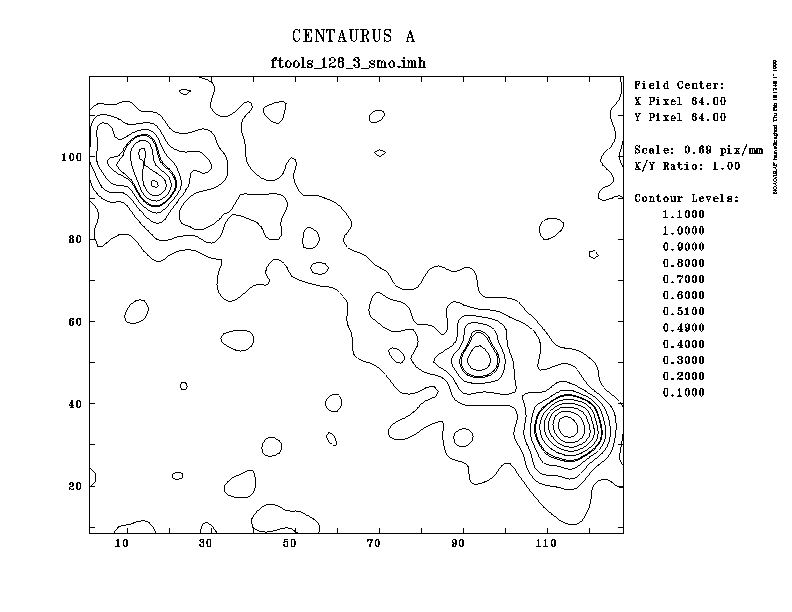



In late 1998, W. Voges and S. Doebereiner were working on the implementation of the WFC star tracker data for the aspect solution required for observations between the 1998Apr loss of the second tracker and the 1998Sep destruction of the HRI detector. During this investigation, they developed an aspect solution routine and comparing photon positions to those in archival SASS output, found an average offset of circa 3.5 pixels for a test observation. This effect vanished if a time shift was introduced into the aspect table. The value of the time shift was close to the fractional part of aspect times. At SAO, we found a bug in the SASS code which explains the results obtained at MPE.
The bug occurs because the fractional time (an integer) assigned to the aspect time was divided by 8192 to get decimal seconds to add to whole integer seconds, whereas it should have been divided by 64. This means that the listed aspect times are wrong by up to one second (for a particular observation, the magnitude of this error is fixed). When a photon arrives, and does the interpolation to find the x,y.roll to apply to itself, it will often be interpolating between wrong entries (i.e. the wrong interval) and it will always get the fraction of the interval wrong. Thus the events have a wrong position, with mean offset of 3.5 pixels for one observation (and similar means for about 4 other sequences so far examined). Preliminary evaluation of one observation (Cen A) indicates an improvement in the width of the PRF by 10%, with an similar value for the increase in peak intensity (i.e. a sharpening of the PRF). For Cen A, the bug contributes something of order 3" as an added error term to the PRF; i.e. FWHM(bad)=SQRT[FWHM(good)² + 3²].
The (RDF) ...anc.fits file contains the aspect table which lists the pointing position (RA, DEC, roll) read from the star tracker every second. The fractional time assigned to each set of aspect solutions depends on the clock reset which occurs each January. Thus, for a year (more or less) the fractional time will be a constant. The RDF ...anc.fits files contain the correct fractional times. NB: The error occurred during the correction of the photon positions by SASS; thus the photon positions in the RDF *_bas.fits file (and quantities derived from these photon positions) are affected, but the aspect information contained in the ASPECT extension of the RDF *_anc.fits file is correct. Data taken from the clock reset on 17 Jan 1997 to the next reset on 20 Jan 1998 had a zero fractional time so the bug had no effect. After 20 Jan 1998, the fractional time was 0.047s, so the effects of the bug are minimal and difficult to detect.
At SAO, F. Primini has developed an approximate solution which is accurate if the roll angle is not changing rapidly (i.e. for normal observations). Since the standard SASS output includes the aspect table (in the ...anc.fits file), we create a 'bad' version of the table by replacing the aspect times with bad times (calculated simply by dividing the fractional part of the aspect time by 128). For each event, we then read (interpolate) RA,DEC from both the good (original) aspect table and from the bad table. Taking the differences, we then find a correction directly for x,y. Finally, we add the new keyword plus two history cards to the header.
ASP_FIX= 'T' HRI ASPECT CORRECTION performed
HISTORY HRI Aspect bug fix incorporated in these data
HISTORY executed by FTOOLS HRI Aspect Fix SAO-Vs1.0/1999feb
We have 3 correction methods to compare to the original SASS product. The evaluation consists of smoothing the central region with a Gaussian of 3" and then measuring the peak intensity and the FWHM of the core emission from Centaurus A. This observation was made in 1994 August with a fractional aspect time of 0.625s. In the following contour plots, the contour levels for the corrected SASS run have been increased by 3.5% to compensate for the additional livetime. The contour line at 0.5 counts/pixel (approximately 50% of the peak brightness of the core) is double-thickness. First is the original SASS Product. Next, a special test run of SASS which corrected the bug. Next, an EXSAS/MIDAS implementation provided by Stefan Doebereiner. Finally, the ftools approximation implemented by F. Primini.




| Peak Intensity On a 3" Smooth | FWHM | ||
|---|---|---|---|
| core of CEN A | first knot out | core | |
| SASS8192 archival | 0.954874 | 0.600 | 8.12x8.62" |
| SASS64 | 1.108816 | 0.685 | 7.51x7.52" |
| (*0.966) | 1.0712 | 0.662 | |
| EXSAS fix | 1.113252 | 0.662 | 7.38x7.10" |
| FTOOLS | 1.072750 | 0.664 | 7.50x7.57" |
NB: SASS64 is 3% longer livetime
The scripts for running the ftools version and associated files can be downloaded from here.